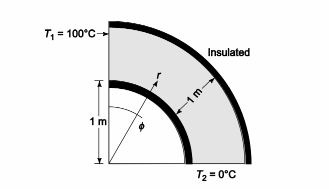A small galvanometer coil of resistance R = 20 ? and full-scale deflection at 1 mA is connected in series with a 4980 ? resistance to build an analog voltmeter. What is the maximum voltage that this voltmeter can read?
A) 3 V
B) 1 V
C) 50 V
D) 5 V
E) 10 V
D
You might also like to view...
What is the relationship between Newton's three laws and Kepler's three laws?
A) Newton's laws can be derived from Kepler's laws B) Newton's laws and Kepler's laws are identical C) Kepler's laws are general and apply to any motion, while Newton's laws apply only to planetary motion in the solar system D) Newton's laws are general and apply to any motion, while Kepler's laws apply only to planetary motion in the solar system
The eyepiece of a compound microscope has a focal length of 2.50 cm and the objective has a focal length of 1.60 cm
The two lenses are separated by 15.0 cm. The microscope is used by a person with normal eyes (near point at 25 cm). What is the angular magnification of the microscope? A) 78 x B) 94 x C) 195 x D) 234 x E) 125 x
The heat conduction equation in cylindrical coordinates is

(a) Simplify this equation by eliminating terms equal to zero for the case of steady-state heat flow
without sources or sinks around a right-angle corner such as the one in the accompanying
sketch. It may be assumed that the corner extends to infinity in the direction perpendicular to
the page. (b) Solve the resulting equation for the temperature distribution by substituting the
boundary condition. (c) Determine the rate of heat flow from T1 to T2. Assume k = 1 W/(m K)
and unit depth .
GIVEN
• Steady state conditions
• Right-angle corner as shown below
• No sources or sinks
• Thermal conductivity (k) = 1 W/(m K)
FIND
(a) Simplified heat conduction equation (b) Solution for the temperature distribution (c) Rate of heat flow from T1 to T2 ASSUMPTIONS
• Corner extends to infinity perpendicular to the paper
• No heat transfer in the z direction
• Heat transfer through the insulation is negligible
SKETCH

The wavelength of a particle relates to its
A) momentum. B) energy levels. C) quantum number. D) all of the above E) none of the above